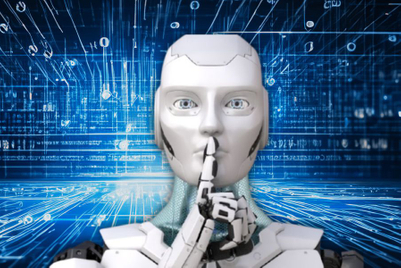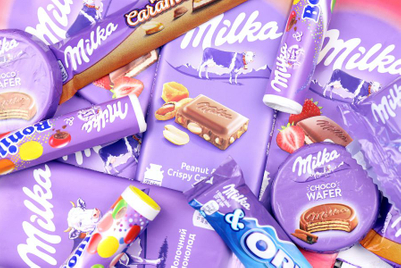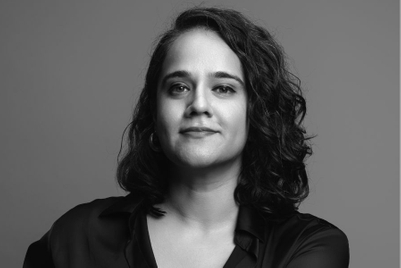
AI-powered platforms are fueling a new era in creativity, reshaping the evolution of brands and businesses.
Today, more participants than ever are engaging in the creator economy. According to Adobe’s 2022 Future of Creativity report, one in four people (23%) are creators, contributing photography, videography and creative writing to online platforms,. Since 2020, more than 165 million people have become part of the global creator economy, with millennials making up 42%.
Content creation tools, like video and audio editing software, ad platforms, courses, and analytics tools are receiving an influx of funding, with the creator economy as a whole estimated to be worth over $100 billion. Evidently, this is a sector on a steep growth trajectory.
The truth is, AI is driving transformation in the creative industries, and for artists and designers in particular, algorithms and automation represent a sea change in the field.
Within brand design, AI tools are already being utilized, as designers embrace text-to-image platforms like Dall-E 2. Trained on millions of images, these machine learning algorithms process text and generate images to meet the descriptions – which may be open and broad or highly specific.
For creative directors, using AI art generators is like having millions of accomplished artists and designers at your fingertips; every great creator with a unique style can be tapped for their visual expertise.
This presents a wealth of opportunity for creatives. Text-to-image generators help creatives visualize their concepts faster, while simultaneously exploring combinations of subjects and styles previously unheard of. Crucially, the images generated will be less limited by the individual creator’s experiences and world view.
Brands have been using AI tools for years. Take Nutella, which in 2017 released seven million different versions of AI-generated packaging in Italy. And beer producer Nastro Azzuro created a new label by training an AI tool on calligraphy.
However, AI usage has also opened up a number of legal and ethical challenges around copyright, plagiarism and deep fakes. Getty Images has banned AI generated artwork in its database around fears of copyright issues.
As AI tools become more visible to the public, voices of dissent are growing louder. When Pantone released its 2023 Color of the Year with imagery created by Midjourney, many members of the community decried the decision and relayed their disappointment that the company used AI instead of “real” artists as in the past.
This discourse is a major challenge facing AI adoption. Artists who may have considered using AI tools could see them as contrary to their identity or as a betrayal to their craft.
One of the main reasons behind this dissent seems to be the ethics of how the algorithms are trained. Rhetoric is building that AI art is dependent on stealing from artists without compensation or permission, with their works being “digitally laundered” under the guise of fair use. This allows anyone with access to text-to-image models to “steal” any style trained into the algorithm. Corporations profiting from “stolen” artwork is also an issue when users are charged for access to the art generator.
Some artists believe it is their responsibility to safeguard their craft from AI. As with any new technology, many of these reactions are driven by fear. Fear that artists will lose jobs. Fear that artists spend years of their lives honing a craft that can now be recreated (digitally) in seconds. Fear that a skill they once thought made them unique and valued is now available to the masses.
In many ways, they are right. AI will democratize the visual arts in a way no other technology has – and many seem to be terrified by the possibilities.
And yet, even a phalanx of emboldened artists cannot close the AI art Pandora’s Box. As these tools become increasingly more accessible, they’re causing a shift in image creation. In the same way smartphones democratized high-definition photography and video, those who have always had vision but lacked the tools to realize it will be empowered to bring their ideas to life.
With new tech tools will come new forms of expression, expanding the creative space for casual creators and professional designers alike. Beyond that, generative AI has the potential to generate trillions of dollars of economic value.
As we enter a New Year, the question is: will AI art continue on its growth trajectory and maintain its luster, or will people simply grow tired of seeing their selfies filtered in yet another cyberpunk suit of armor and instead crave “real” art again?
Time will tell. But one thing’s for sure – with next-level tools accessible to a growing pool of creators, we are undoubtedly entering a world of new possibilities.
John Adie is creative director at Vivaldi.


.jpg&h=334&w=500&q=100&v=20250320&c=1)

.jpg&h=334&w=500&q=100&v=20250320&c=1)
+(1).jpg&h=334&w=500&q=100&v=20250320&c=1)

.jpg&h=334&w=500&q=100&v=20250320&c=1)



.jpg&h=334&w=500&q=100&v=20250320&c=1)




.jpg&h=268&w=401&q=100&v=20250320&c=1)


